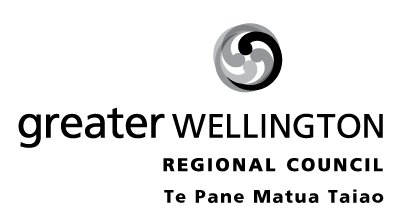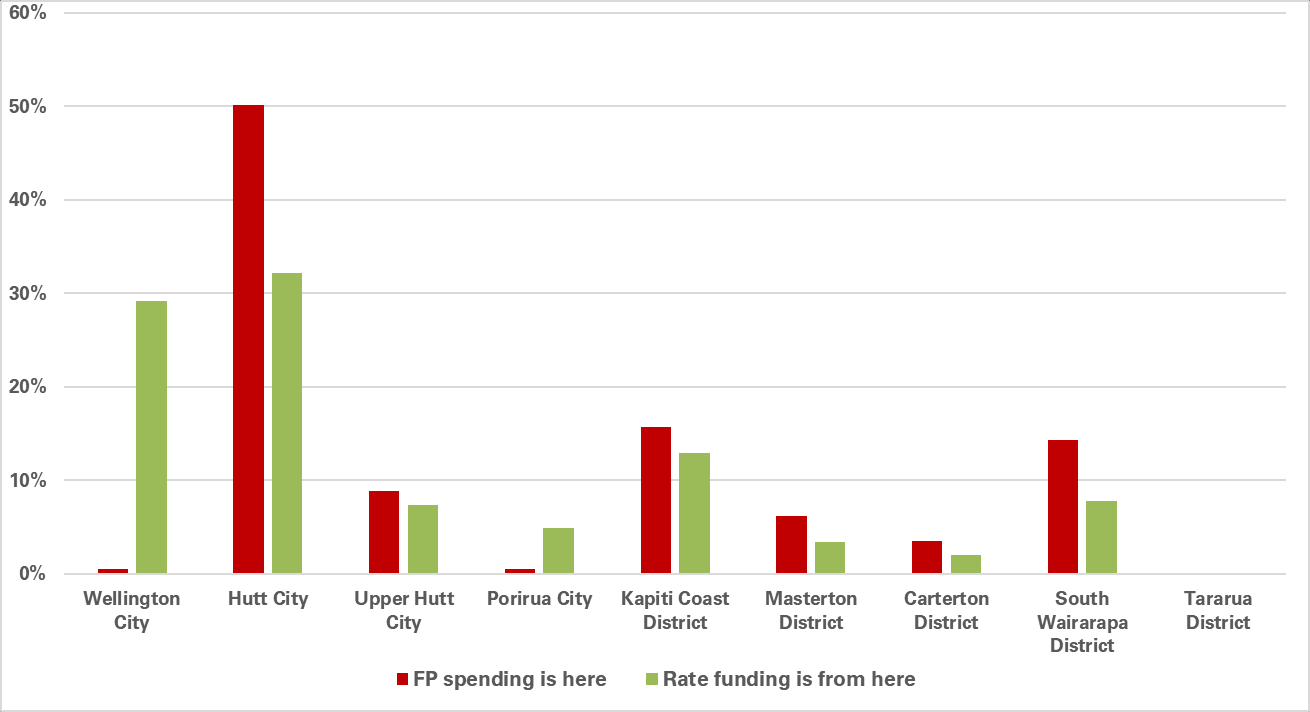 Report
2018.24
Report
2018.24
Date
7 March 2018
File
LGAP-7-771
Committee
Council
Author
Mark Ford – Manager, Finance
Approval of the proposed revenue and financing policy
and adoption of accompanying statement of proposal
for consultation purposes
1.
Purpose
To seek approval of the proposed revenue and financing policy and adoption of
the accompanying statement of proposal for consultation purposes.
2.
Background
A full review of the current Revenue and Financing Policy (R&FP) has been an
objective of GWRC for some time. In the 2015 Long-Term Plan, GWRC said
it would review the policy at some stage in the next three years, to reflect
concerns expressed by members of the community over the equity of the
allocation model and upcoming changes to the operating model for public
transport. GWRC has now undertaken a review of the funding for all activities.
A working group of Councillors, supported by officers, began the policy
review last year and discussed and refined the principles and a number of
models in a series of workshops. Detailed modelling and impact assessment
was conducted and peer reviewed.
Under the Local Government Act 2002 (LGA), a local authority must, in order
to provide predictability and certainty about sources and levels of funding,
adopt a R&FP.
Section 103 of the Act sets out the required content of the policy. The policy
must state policies in relation to the funding of operating expenses and capital
expenditure from a number of possible funding sources, including: general
rates; targeted rates; fees and charges; grants and subsidies.
The R&FP must be adopted prior to the adoption of a long term plan. Any
changes to the proposed R&FP, as a result of consultation, must be considered,
agreed and adopted before the long term plan.
REPORT 18
PAGE 1 OF 6
 3.
Comment
3.
Comment
Revenue and Financing Policy
The proposed R&FP has been revised to make it easier to navigate and
understand. In addition, two significant policy changes are proposed. In
considering how to fund flood protection and public transport, GWRC
considered the factors in section 101(3)(a) and has chosen to advance proposals
that particularly give weight to achieving funding decisions that are equitable
across the region and reflect where the benefits fall.
Flood Protection
GWRC invests a large amount in flood protection throughout the region. Our
programme includes stop-banks on our main rivers, and barrage gates at Lake
Wairarapa. It is estimated that flood protection work will cost over $200
million over the next ten years. Some areas of our region require more
significant flood protection work than others. The vast majority of our flood
protection work takes place in three areas – the Hutt Valley, Wairarapa and
Kāpiti.
The current funding policy for flood protection uses a mix of user charges,
general and targeted rates. The current policy means ratepayers outside of the
major flood catchments contribute a large portion of the funding for flood
protection.
This graph shows the share of GWRC expenditure for flood protection in each
district, compared to the share of funding each district provides. Figure 1 uses
2018/19 figures, excluding GST.
Figure 1 GWRC flood protection – total expenditure compared to funding, by district
REPORT 18
PAGE 2 OF 6
For the purpose of public consultation, a preferred option has been identified to
change the funding policy. Retaining the status quo is also an option. Both
options are being presented to the public for feedback.
The preferred option for consultation proposes moving to a model where 70%
of the cost of the work will be funded by a targeted rate in each of six
catchments:
Wellington
Porirua
Kāpiti Coast
Lower Hutt
Upper Hutt
Wairarapa
Catchments are based on the boundaries of the city or district. In the
Wairarapa, the Masterton, Carterton and South Wairarapa districts are
combined for the purpose of this rate.
The remaining 30% of the funding requirement will be funded through a
targeted rate, applying to across the region.
GWRC would continue the rate funding for river management and drainage
schemes, so that there will be two flood protection rates for most properties,
and three rates for those in approved schemes in the Wairarapa.
This package of targeted rates reflects the different levels of benefit applying to
communities from flood protection work.
Public transport
Historically, Public Transport was funded from fare revenue (approximately 45
to 50%) and a subsidy from NZTA (approximately around 25%), with the
remaining costs (approximately 25%) funded through rates.
Report 18.71 (considered separately) proposes amendments to make it
consistent with the new Public Transport operating model, when all fare
revenue will come direct to GWRC and to reflect the introduction of a package
of student and off-peak discounts.
In line with a stronger understanding of the benefits of public transport, GWRC
has developed a new rating approach. The proposal is to:
Allocate rates for public transport as one network.
Apply a weighting, called a rating differential, to recognise the different
levels of benefit that different categories of ratepayers get from the
network.
As a result, most residential ratepayers will pay the same rate for public
transport on an equalised capital value basis. Residential ratepayers in the
Wairarapa will pay half the rate paid by ratepayers in other areas of the region.
Wellington CBD businesses have the highest rating differential, and rural
properties have the lowest, taking account of the levels of benefit that different
rating groups receive from public transport.
REPORT 18
PAGE 3 OF 6
Transition policy
GWRC proposes transitioning changes to the new rates allocations in the R&F
over three years, so the policy is completely implemented from 1 July 2021.
4.
Consultation process
The changes in the proposed R&FP relate to the funding of two of GWRC
largest areas of work, and they are considered significant due to the level of
public interest we expect.
Changes to the R&FP will be consulted on concurrently with the Consultation
Document (CD): ‘Investing in Our Extraordinary Region’ (see Report 18.23).
The consultation document includes a summary of the proposed changes to the
policy and a reference to the consultation process.
The allocation of rates within the region is significant and impacts some of the
key aspects of the consultation document and financial strategy including
affordability and fairness. It should be noted that the information on the
allocation of rates in the CD has been prepared on the basis of the proposed
changes to the policy. The inclusion of R& FP changes in the CD is consistent
with requirements of section 93C(2)(d) of the LGA.
Section 83A of the LGA allows for combined or concurrent consultation where
a local authority is required to use or adopt the special consultative procedure
(SCP). We are required to use the SCP to consult on the CD.
It is recommended that the SCP and the process outlined in section 83 also be
used for the RF&P. This requires the preparation of a Statement of Proposal
(SOP). This approach is appropriate given the significance of the proposed
changes, the potential impacts on parts of the community and the level of
public interest. This is consistent with our Significance and Engagement
Policy. Use of SCP will also ensure compliance with sections 82 & 82A of the
Act.
The proposed R&FP is attached in
Attachment 1 and the
Statement of
Proposal
is attached in
Attachment 2.
Submissions responding to the statement of proposal on the proposed R&FP
will be considered at the hearings being held for the 10 Year Plan and has been
incorporated into the Hearing Committee's terms of reference (Report 18.23
).
5.
Engagement
The proposed changes to the R&FP are significant and likely to be of
considerable interest to the community. As such a comprehensive engagement
approach will be utilised in conjunction with the engagement on the 10 Year
Plan.
A number of key messages have been developed and will be used throughout
the engagement process.
REPORT 18
PAGE 4 OF 6
A Summary of Information (
Attachment 3) has been prepared as the basis for
public consultation, in accordance with sections 83 and 83AA of the Act. A set
of Q & As to support public consultation are being prepared and will be made
available on the GWRC website.
Consultation and engagement will follow the approach for the 10 Year Plan
outlined in Report 18.23.
6.
Consideration of climate change
The matter requiring decision in this report has been considered by officers in
accordance with the process set out in the GWRC Climate Change
Consideration Guide. There are not direct climate changes impacts of the
proposed policies as they relate to funding mechanisms, rather than activities
themselves.
7.
The decision-making process and significance
Officers recognise that the matters referenced in this report may have a high
degree of importance to affected or interested parties.
The matter requiring decision in this report has been considered by officers
against the requirements of Part 6 of the Local Government Act 2002 (the Act).
Part 6 sets out the obligations of local authorities in relation to the making of
decisions.
7.1
Significance of the decision
The subject matter of this report is part of a decision-making process that will
lead to the Council making a decision of high significance within the meaning
of the Local Government Act 2002, being the adoption of the R&FP. The
immediate decision required by this report has a low to medium level of
significance.
8.
Recommendations
That the Council:
1. Receives the report.
2. Notes the content of the report.
3. Agrees that the special consultative procedure be used to consult on the
proposed changes to the Revenue and Financing Policy, and that this
approach meets the requirements of sections 78, 82 and 82A of the Local
Government Act 2002.
4. Agrees that the consultations on the 10 Year Plan and the proposed
Revenue and Financing Policy shall be concurrent.
5. Approves the proposed Revenue and Financing Policy, as set out in
Attachment 1, for the purposes of consultation.
6. Adopts the statement of proposal and summary of information for the
proposed Revenue and Financing Policy, as set out in Attachments 2 and
3.
REPORT 18
PAGE 5 OF 6
7. Endorses the engagement approach outlined in section 5 of this report.
8. Authorises the Council Chair to make editorial changes to the proposed
Revenue and Financing policy and accompanying documents to correct
errors and improve public understanding.
Mark Ford
Luke Troy
Dave Humm
Manager, Strategic Finance
General Manager, Strategy
General Manager, Corporate
Services/Chief Financial
Officer
Attachment 1: Proposed revenue and financing policy
Attachment 2: Statement of proposal - proposed revenue and financing policy
Attachment 3: Summary of information – proposed revenue and financing policy
REPORT 18
PAGE 6 OF 6

